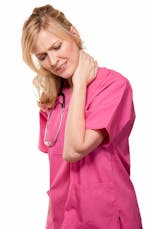Have you ever paid attention to how much you do with your shoulders on a daily basis? From putting on a shirt, doing your hair, playing fetch with your dog, lifting groceries out of the cart or reaching a book on the top shelf you are routinely and unconsciously using your arms and shoulders at a moments notice. It"s habit and it is our biological instinct – if you need to reach, lift, push, pull, touch or manipulate an object you are often using aspects of your shoulder joint without your active awareness. Now add to the equation pain, whether traumatic from a fall or chronic and progressive from "wear and tear," and think of all the things and activities that would now be affected. Your independence with hygiene, dressing, cooking, cleaning would all be challenged.
So what gives? Why does it seem like such simple movements or even keeping the arm still can cause so much pain that seems to drag on without relief? Let"s break it down to the building blocks. The shoulder anatomy itself is actually quite complicated, and comprised of three bones, your humerus (upper arm), clavicle (collar bone), and scapula (shoulder blade). The junction of these bones form two main joints, each of which is surrounded by a network of cartilage, ligaments that connect bones, tendons that connect muscle to bone and over 10+ muscles that contribute to all the shoulder movements. Your shoulder is the most mobile joint in your body, but unfortunately that comes at a price. Due to its vast abilty to move, it is inherently unstable and relies on coordinated mechanisms to keep it operating and maintain its position. When something causes the synergy to be tipped off balance it often leads to shoulder pain and the little things in life become not so little.
Shoulder problems tend to originate from four major categories:
- Tendon Inflammation or Tendon Tear
- Arthritis
- Instability
- Fracture
Tendinosis/Tendonitis/Bursitis
As said before, tendons attach muscle to bone and are routinely worn down from normal aging as well as from both acute and long term repetitive activities. This is very common with the main shoulder stabilizing group of rotator cuff muscles or the biceps. Bursae are small fluid-filled sacs that act as cushions between bone and tissues and decrease friction. These too can become inflammed with excessive use.
Tendon Tears
Rotator cuffs tears are very common, and occur due to traumatic acute injury or degenerative changes. They can be deemed full or partial-thickness and can vary in size. In both cases of tendon inflammation and tearing, something called "impingement" is frequently involved, in which the top portion of the shoulder blade (acromion) rubs on soft tissue structures when the arm is elevated and thus causing an inflammatory response.
Arthritis
Different types of arthritis exist, but most well known is osteoarthritis, in which the cushio-like cartilage within joints deteriorates and causes greater bone on bone contact with movement. This results in decreased lubrication, pain, bone spurring and stiffness within the shoulder.
Instability
This happens when the top of the upper arm is forced out of the joint, and again can be traumatic or from overuse. Also known as shoulder dislocation or subluxation depending on severity, this causes structures to be loose or torn and can lead to unsteadiness with arm movements and accelerate degeneration.
Fracture
Fractures typically occur due to older individuals falling due to imbalance or acute accident such as motor vehichcle or sports related injury. This can lead to swelling, significant pain and stiffness.
So what can a physical therapist, such as myself do for this list of things? Obviously everyone"s goal is to decrease pain and get back to their previous level of activity as quickly as possible. We at Professional Rehabilitation Services are educated and well practiced in ways to improve each person"s individual limitations in order to help them return to their distinct aspirations. This includes: manual therapy techniques to improve shoulder joint mobility and soft tissue tenderness; dry needling to decrease chronic muscle and musculotendinous dysfunction such as trigger points and muscle spasms that occur frequently in this region; pain management modalities such as ultrasound, phonophoresis, and electrical stimulation to decrease swelling, inflammation and perceived pain levels and therapeutic exercises based on an individuals" limitations in extensiblity, strength, neuromotor control and stability to return to maximal arm usage. Physical therapy is a great option to treat shoulder issues conservatively without need for surgery and decreased need for injections and medications.
So if you or someone you know would like to know more about physical therapy options for a variety of shoulder and other conditions, seek the consultation of a physical therapist at one of our six locations or see your physician for a referral to one of our facilities. Our newest location in Little River, is now accepting patients! For further information on this or other related topics you can contact Richard A. Owens, PT, MS, OCS, Cert. SHT, CWcHP, Cert DN (Surfside/Murrells Inlet) (843) 831-0163, Richard DeFalco, DPT, OCS, CSCS, CWcHP, Cert. DN (Myrtle Beach/Little River) (843) 839-1300, Jill Phelan, DPT, Cert. DN (Conway/Little River) (843) 733-3031 or Brian P. Kinmartin, PT, DPT, MTC, OCS, STC, CWcHP, Cert. DN (Pawley's Island/Murrells Inlet) (843) 235-0200 or visit our website at www.prsrehabservices.com where you can learn more about the company and even download a referral form for your physician to fill out. You can also call and schedule a free 15-minute consultation!

